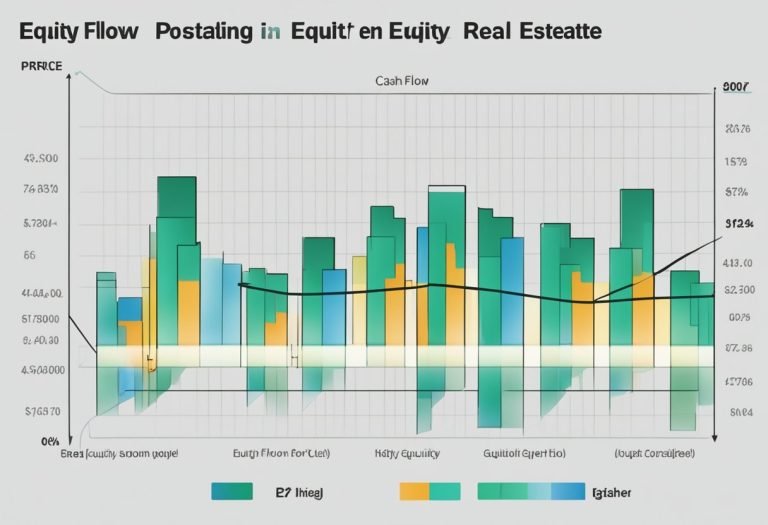What Role Does Diversification Play in Enhancing the Stability of a Real Estate Portfolio?

How Does Diversification Affects The Stability of a Real Estate Portfolio?
Imagine you’ve spread your investments across a mix of urban high-rises, suburban homes, and rural land. This strategy, known as diversification, is your key to a more stable real estate investment. By not putting all your eggs in one basket, you’re less likely to feel the sting if one market segment takes a hit.
You’ve got the freedom to capitalize on different economic cycles and regional growth patterns, cushioning your assets against the unpredictable nature of real estate markets. With a diversified portfolio, you’re better equipped to weather downturns and seize opportunities for growth, ensuring you maintain control over your financial destiny.
Key Takeaways
- Diversification in a real estate portfolio reduces the risk of financial loss by spreading investments across different property types.
- It allows investors to capitalize on different economic cycles and regional growth patterns, providing stability and helping weather downturns in specific market segments.
- Diversification serves as a cornerstone of risk management in real estate investing, mitigating risks associated with individual assets and guiding investors through market volatility with greater assurance.
- Exploring asset allocation strategies, such as diversification across different asset classes and investment vehicles like REITs and mutual funds, enhances portfolio stability and strengthens real estate investment.
Risk Management Fundamentals
You’ll find that diversification is a cornerstone of risk management, serving as a protective measure against the financial turbulence of individual investments. Embracing this principle within your real estate investment is like sailing with a well-calibrated compass; it guides you through market volatility with greater assurance.
By spreading your investments across various property types, you’re not just creating a strategy, you’re crafting a shield against the unpredictability of the market.
Imagine your real estate investment as a mosaic of opportunities. Allocating assets across residential, commercial, and perhaps even industrial properties can create a stable rental income stream that persists even when the economy wobbles. This isn’t about putting all your eggs in one basket; it’s about having multiple baskets and knowing that if one falls, you’ve got several others supporting your financial freedom.
Remember, the goal isn’t merely to chase high returns on real estate, but to ensure that your overall risk is tempered. The beauty of integrating infrastructure into your portfolio lies in its tendency to generate steady, predictable cash flows, a trait that’s a boon during unsettling economic climates.

It’s this strategic asset allocation that forms the bedrock of risk management fundamentals, propelling you towards a future where your financial freedom isn’t just a possibility, but a tangible reality.
Asset Allocation Strategies
To further stabilize your real estate investment, you’ll need to master various asset allocation strategies that capitalize on the unique strengths of both property and infrastructure investments. Diversification is your ticket to freedom from the volatility of the market and the unease that comes from having all your eggs in one basket. By spreading your investments across different asset classes within the real estate market, you not only mitigate risks associated with individual assets but also harness the potential for steady income.
Consider the blend of real estate investments and infrastructure assets. Properties, whether commercial or residential, offer the chance for capital appreciation and rental income. On the flip side, infrastructure projects provide long-term, stable cash flows with typically lower correlation to the ups and downs of the market.
When allocating assets, don’t just limit yourself to direct property ownership. Explore investment vehicles like REITs or mutual funds that bundle real estate and infrastructure assets. This approach allows you to tap into multiple sectors and geographical areas, further enhancing portfolio stability.

Navigating Market Volatility
Diversification acts as your portfolio’s anchor, steadying it against the unpredictable waves of market volatility. In the realm of real estate investing, it’s your strategic shield that guards against the whims of market conditions. You’re not just aiming for portfolio stability; you’re seeking the freedom to thrive, regardless of economic storms.
Your real estate invetment, bolstered by a mix of residential and commercial properties, can weather fluctuations in property prices. When one market sector dips, another might hold steady or even appreciate, balancing out the impact. Rental income, a relatively defensive aspect of your investment strategy, can provide a consistent cash flow, offering a buffer when sales markets are shaky.
Moreover, interest rates, which influence borrowing costs and investment yields, often sway with market volatility. By diversifying across various real estate sectors, such as integrating infrastructure in your portfolio, you’re less tied to the fickle nature of one asset class. Infrastructure investments often come with low correlation to traditional real estate and can be a source of stable, long-term returns, smoothing out your journey through choppy financial seas.
Embrace diversification—it’s your compass for navigating market volatility with confidence and grace.

Crafting Investment Strategies
When crafting your investment strategies, it’s essential to integrate diversification as a cornerstone to stabilize and strengthen your real estate investment. By spreading your investments across various asset types, like residential and industrial properties, and different locations, you not only minimize risk but also open doors to multiple opportunities for growth. Think about the freedom you gain when you’re not tied down to the success or failure of a single property type or market.
Incorporating real estate investment trusts (REITs) can provide you with a taste of this diversification without the need to directly manage properties. REITs bundle properties into a tradable security, giving you fractional ownership and exposure to a range of real estate assets. This asset allocation approach is vital for portfolio stability, allowing you to ride out market waves with confidence.
Remember, diversification isn’t just about owning different types of properties; it’s about crafting a balanced, resilient real estate investment that aligns with your freedom-seeking spirit. By strategically selecting a mix of properties and investment vehicles, you’re well on your way to a stable and potentially lucrative future.
Now, let’s delve into the long-term diversification benefits, ensuring your investments withstand the test of time.

Long-Term Diversification Benefits
You’ll find that the strategic inclusion of both real estate and infrastructure in your portfolio can significantly bolster its resilience over time. Diversifying your real estate assets across various locations and sectors offers you the freedom to navigate through market fluctuations with greater ease. By investing in different types of properties and infrastructure, you’re not just putting your eggs in multiple baskets, but you’re also crafting a safety net that can withstand economic tremors.
Incorporating infrastructure into your portfolio can provide the anchor you need. These assets often have a low correlation with traditional stock and bond markets, making them an effective asset for long-term diversification. As a real estate investor, you’ll appreciate that infrastructure investments tend to be relatively stable, offering a steady income stream that complements the growth potential of your real estate.
Frequently Asked Questions
Why Is Diversification Important in Real Estate?
Diversification’s crucial as it balances your portfolio, mitigates risk, and ensures income stability. You’ll achieve investment balance, preserve capital, and navigate economic cycles better with varied tenant types and a broad geographic and sector exposure.
How Can Diversification of a Real Estate Portfolio Potentially Impact One’s Investments?
By spreading your investments across various properties and locations, you’re not just chasing freedom; you’re building a fortress. Diversification ensures market resilience, balances your portfolio, and safeguards your capital against unpredictable economic cycles.

What Is Property Portfolio Diversification?
You’ll maximize freedom by diversifying your property types, ensuring a broad geographic spread, and mixing asset classes. This strategy balances yields, weathers market cycles, and optimizes capital allocation through careful risk assessment and tenant variety.
What Is Diversification in Everfi?
You’ll learn in Everfi that diversification means spreading investments across asset classes, market segments, and geographic areas to balance your portfolio, manage risks, and bolster financial resilience as part of your investment strategy.
Conclusion
In the tapestry of real estate investing, diversification is your golden thread, weaving through the fabric of your portfolio to strengthen its resilience.
By smartly spreading your assets across various properties and regions, you’re not just managing risks—you’re setting sail on steadier seas.

With a diversified approach, you’ll ride out the storms of market volatility and relish in the sunshine of long-term growth.
So, diversify, and let your investments be as enduring as time itself.
How Does Investing In Real Estate Contribute To Portfolio Diversification?








2 Comments
Comments are closed.